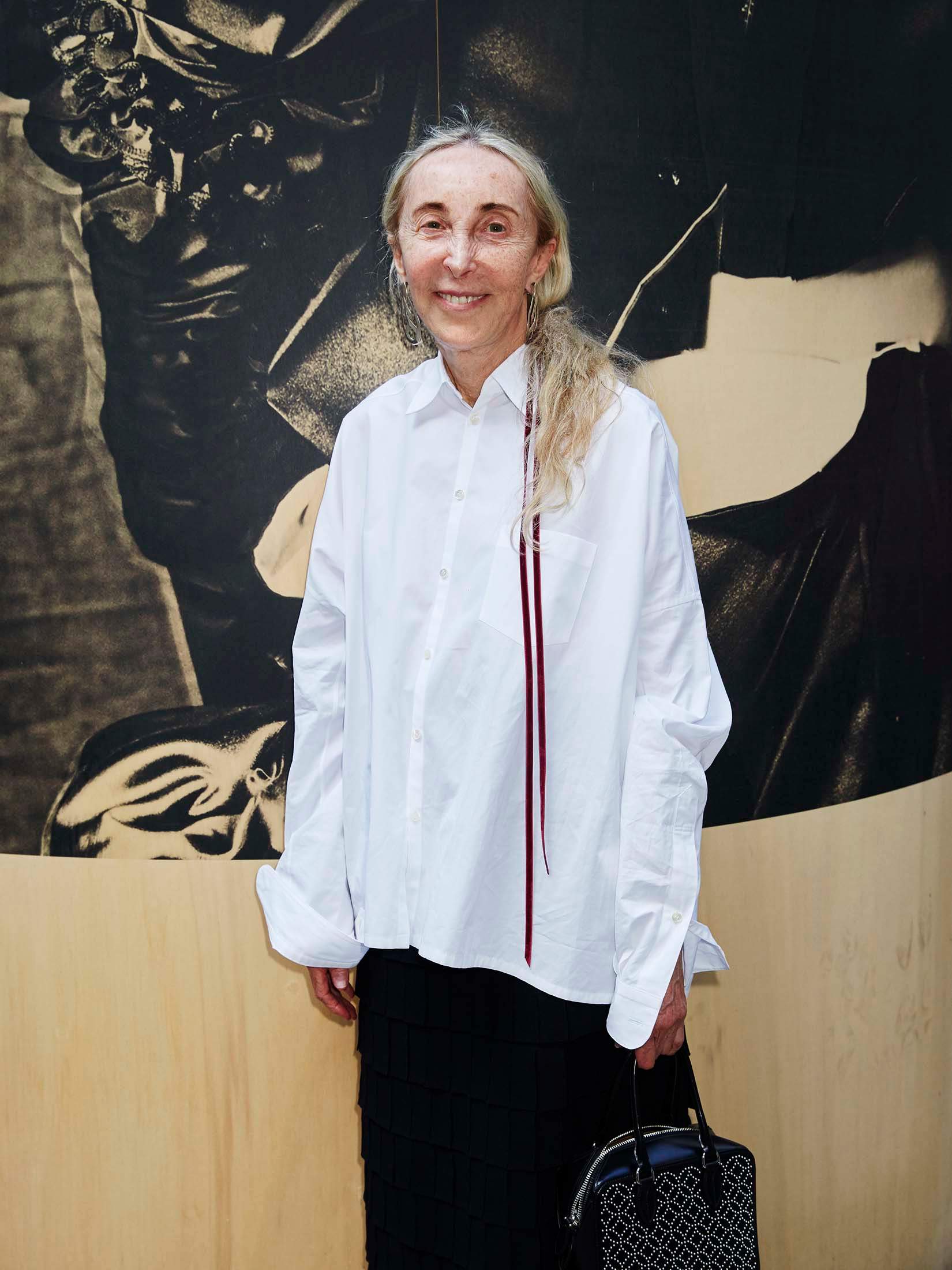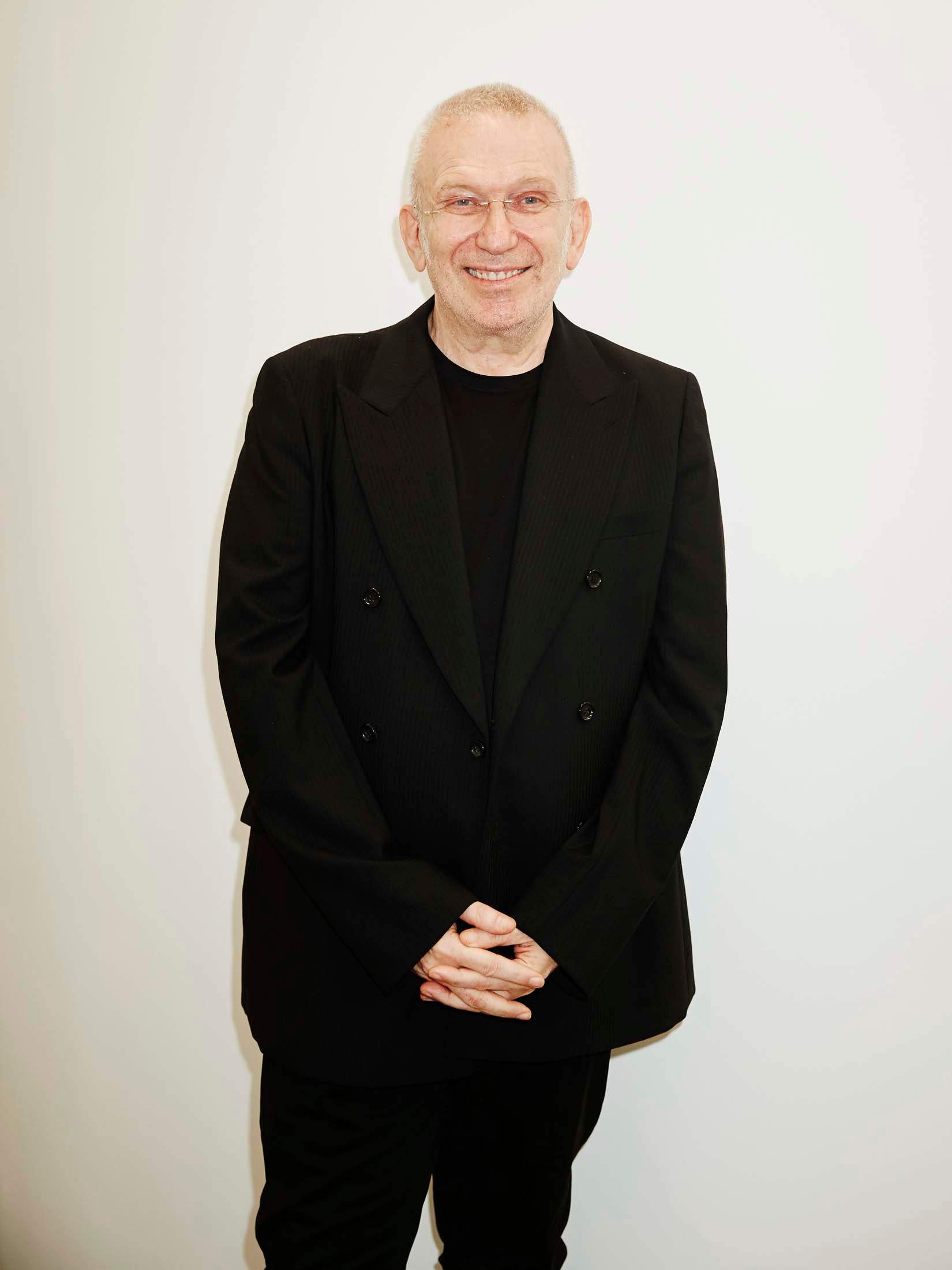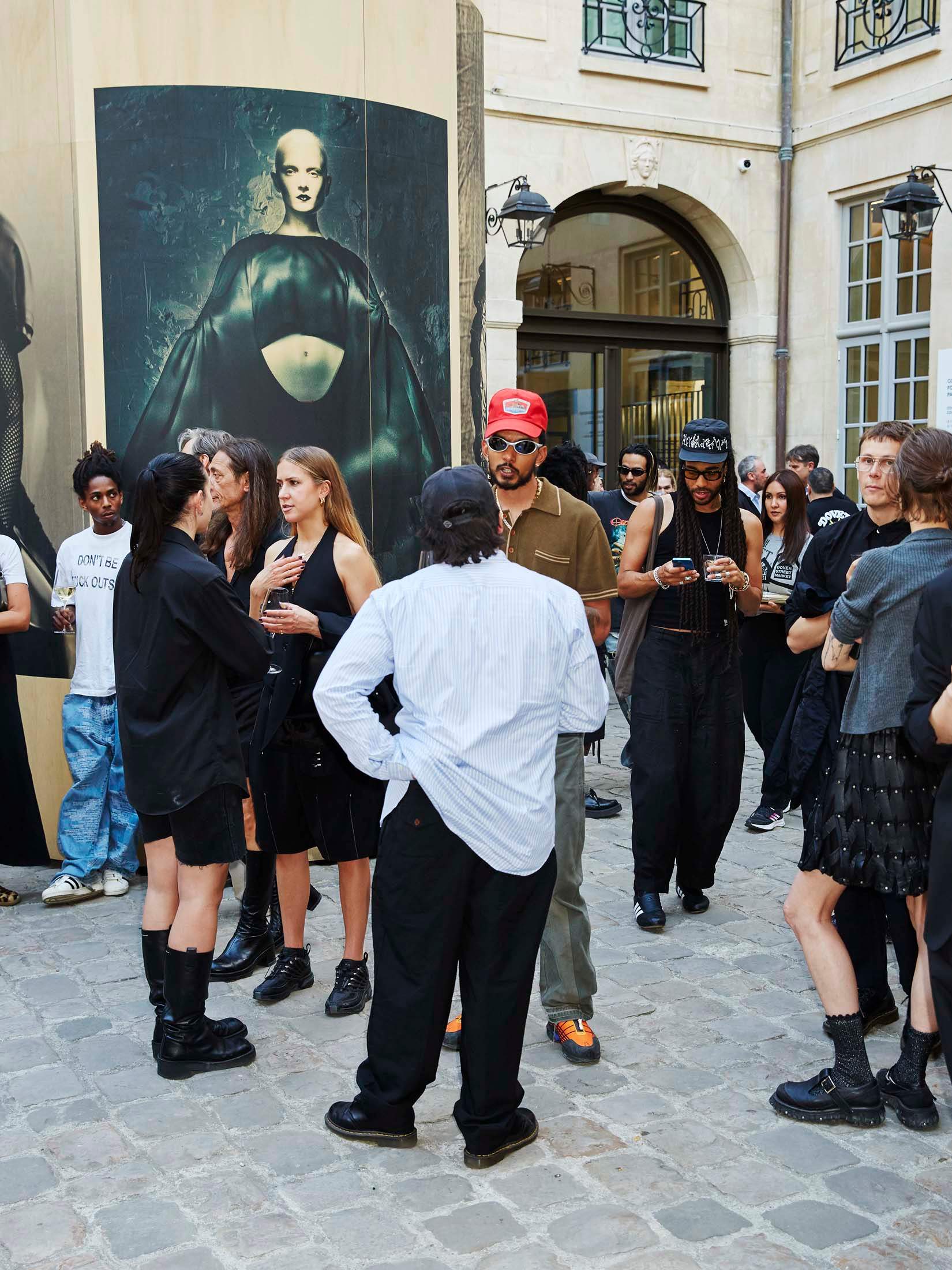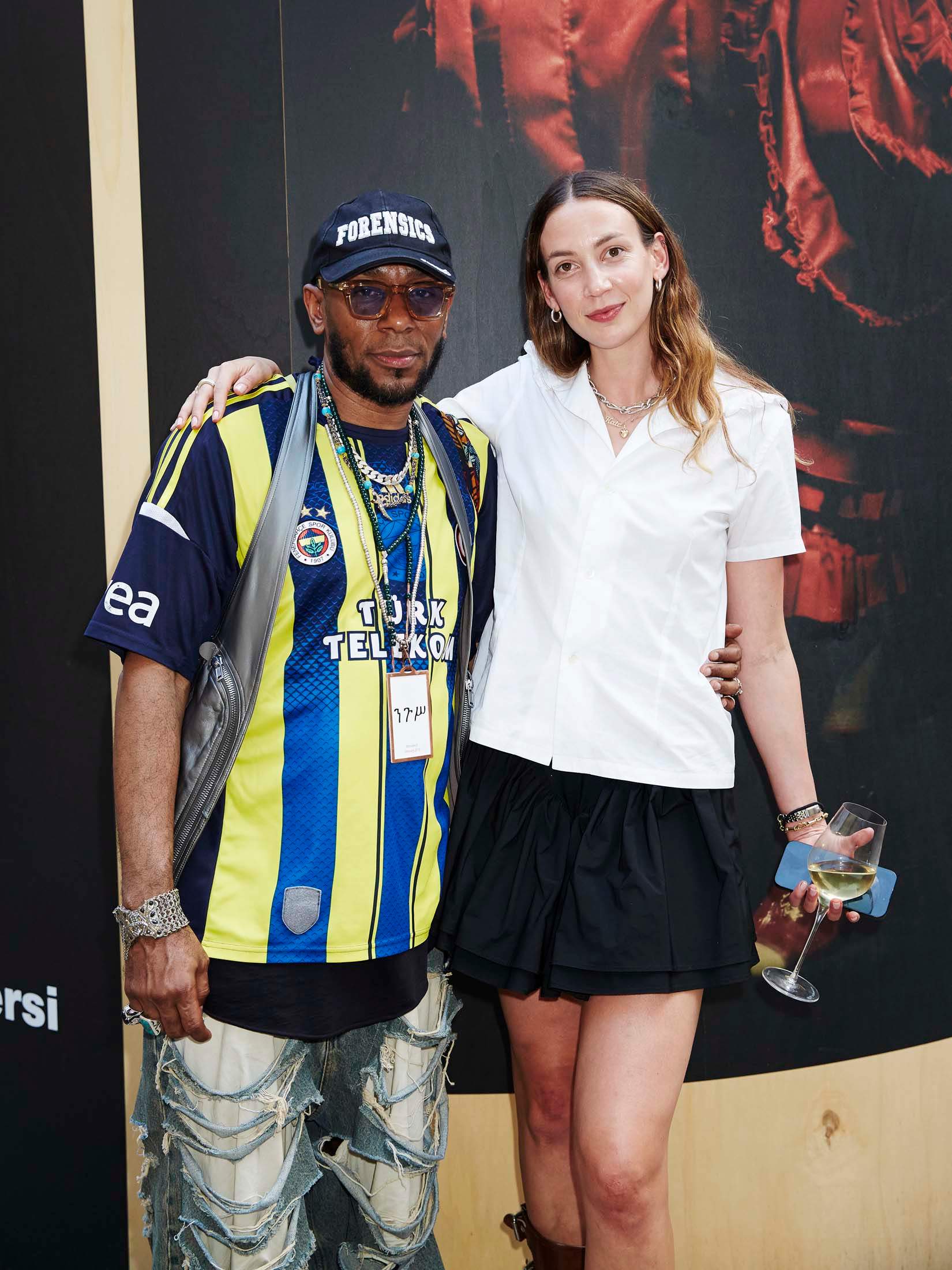Fashion: Retail / Paris
Capital gains
Adrian Joffe said that Paris ‘didn’t deserve’ a Dover Street Market. As he opens a shop in the city, he tells us why he changed his mind.
“It felt right,” says Adrian Joffe, president of Comme des Garçons International and Dover Street Market (dsm) International. He keeps returning to this phrase when discussing the opening of dsm’s first Paris outpost in Hôtel des Coulanges, a 17th-century landmark that once belonged to French aristocrat and writer Madame de Sevigné.

Joffe, (pictured), had a good feeling about the former hôtel particulier when he first entered its courtyard. His instinct guided him to renovate the historic property alongside revered Comme des Garçons designer Rei Kawakubo, his partner in both business and life. The duo converted the space into both an office for dsm’s retail and brand-development teams, and a multi-brand boutique complete with a Rose Bakery café. Kawakubo designed the interiors, which feature futuristic steel displays spread across the shop floor, while Joffe was in charge of the buying. “We knew that we wanted to open another dsm,” says Joffe, dressed in his usual all-black uniform as he sits in his minimalist top-floor office. “Our aim is still to create beautiful chaos – but in a new way.”
Joffe started working for Comme des Garçons in 1987 in Paris and has since become a true Le Marais local and a fluent French speaker. Despite this, he has previously said that Paris “didn’t deserve” its own dsm. “I like to contradict myself,” he says now. “It’s probably a character flaw; I have nothing against the city.”
The opening comes at a pivotal time for both dsm and the retail industry, which is moving away from traditional wholesale modelling. Many retailers are relinquishing control of shop floors to luxury brands operating on a concession basis. But dsm Paris, which describes itself as an “anti-department store”, is going against this ascendent formula. The shop’s exterior bears no logos or window displays, while clothing from various labels is mixed together inside the spaceship-like structure: jackets by Prada are hung next to leather items by Bottega Veneta and dresses by Simone Rocha.
It’s this free spirit – and Joffe’s ability to convince designers to take bigger risks – that has allowed him to shape the future of up-and-coming brands and build a community of dsm loyalists. Supporters range from milliner Stephen Jones and retailer Carla Sozzani to Jean Paul Gaultier – all of whom paid Joffe a visit in Paris to toast the new opening.
Joffe might be one of the few retail executives still guided by instinct and creativity rather than data. But he’s also aware that the company needs to turn a profit to stay alive. Here, he tells monocle about his plans to achieve this, as well as the dsm business model and his vision for the future of Comme des Garçons Parfums. —
Why did you decide to open Dover Street Market Paris and why in Le Marais?
We had known for some time that we wanted to establish a Paris outpost and had been thinking about where it could be. We knew that we didn’t want it to be on main streets such as Avenue Montaigne or Rue Saint-Honoré. This has always been the dsm way, to occupy areas that are outside [the luxury sphere] or about to be developed.

We were open to any kind of interesting place. The feeling, atmosphere and feng shui of a space was a lot more important than the location. I had my doubts about Le Marais because it’s very touristic but we had to choose a central area. Parisians can be a little lazy; they don’t like to go too far out of their way to shop. Every city is different. In London and New York, people are willing to travel from far and wide to get to dsm and, in Singapore, they go to [retail enclave] Dempsey Hill.
What’s your relationship with Paris?
Rei has always said that if she were to venture outside Japan, she would go to Paris. For her, it’s the most important city in the fashion world. In 2016, I said that it didn’t deserve a dsm but a lot has happened to make me change my mind over the past eight years.
Paris seemed to be losing its spark for a while. Many of my friends were moving to Berlin and international avantgarde films, which traditionally debuted in Paris, were showing in London or Venice. The city was becoming less creative. After Brexit and the coronavirus pandemic, however, people became tired of cities such as Berlin and more creatives returned to the French capital. Everyone now says that Paris is the place to be. The atmosphere and energy are so good.
Then again, the rise of the far-right is scary. Macron is a decent politician but his decision to call an election right before the Olympics was arrogant. As designers, we have to remain optimistic, believe in what we do and try to always offer alternatives. I’m not saying that we can solve the political situation – but we’re here and we stand for a different perspective.
You used the new Dover Street Market location as a cultural centre to host fashion shows and exhibitions before opening the permanent shop. How did that influence the final concept?
We fell in love with the building because it used to be a home. It has such perfect proportions and a beautiful garden. We thought that we would be able to do great things here one day and knew that we wanted to make the property more energetic inside. It felt restricted by its 19th-century aristocratic beauty, so we had to modify the structure and liberate the walls. From there, we kept developing ways to make the shop different. We wanted to create a new dsm that felt as though it had moved on from the other six locations, not that there’s anything wrong with them.
Other dsm shops have event spaces, where there are pop-ups, launches and book signings. Brands can come and do what they like. But we didn’t want that to be the case here. Yes, the building is more permanent than a pop-up but everything eventually comes to an end. For that reason, I like calling the shop an event.
It is also a small space, so we played around with the layout: our offices are upstairs and a Paolo Roversi exhibition is outside. The shop is just one of the things happening here. Anything that we do in the courtyard and café is separate. The building is what holds it all together.

How did the new set-up affect the interior design?
We knew that there needed to be something different about its visual identity, not only because of the history of the building but also because the shop wasn’t the sole focus of our operations. We share rent with the brand-development division of dsm here. The shop wouldn’t be able to survive on its own.
To differentiate ourselves from our other sites, we had to understand and agree on the design. How could we take it to the next level? For Rei, the answer was simple: she would design it all. I thought, “Perfect.” That’s how we created this point of difference. At a time when so much power and control is held by luxury houses, it felt like the right move. There’s so much ego in fashion; it’s all about logos and labels. We decided not to create any dedicated brand spaces. It’s all egalitarian.
Four major luxury brands – Prada, Miu Miu, Balenciaga and Bottega Veneta – agreed to be here next to up-and-coming names. How do you achieve the right mix?
We need powerful brands to want to be in our shop. But there seems to be less room for smaller, independent labels to grow in today’s market. More well-established houses are eager to get inside younger companies to draw on their energy and their creativity. The problem is that bigger brands usually swallow them up rather than raise them high.
I don’t want to give the impression that we are trying to save independent designers. Some luxury brands are amazing too. They accept our approach and agree that we have to find alternative ways of doing things. I want to give everybody, including well-known labels, the chance to change and adopt working practices that aren’t driven by ego, power and profit. If we don’t, then the industry will fall apart.
What’s your buying strategy?
dsm is famous for mixing together products from different brands. We were the first company to put Prada next to Supreme on a shop floor. Everyone was wondering what was going on and who our target audience was. Today streetwear and luxury are heavily linked. There are some brands that sell hoodies for $2,000 (€1,840). It doesn’t make any sense. So I thought that here, we would have less of these so-called “categories”. I wanted to move away from the borders that fashion has created. Definitions, categorisation and departmentalisation are all tied to a very old way of thinking. It explains the demise of the department store, especially in the US. The very word suggests that items are being separated, which is illogical these days. Our way of buying is about that big, beautiful middle ground: brands that have something to say. This is also the heart of the business. We have always wanted to give spaces to people with a vision.


Will the pieces on display represent a mix of price points?
Luxury pricing is depressing; I don’t know how long it can go on for. I look for reasonably priced pieces, particularly when it comes to young designers. I explain to them that they’re not obliged to follow the corporate way of doing things. If it costs €10, you don’t need to charge €50. That model is wrong. If you want to cover your expenses and do some marketing, then you could charge €25. They don’t teach this enough in schools.
Is streetwear still relevant?
There are still great brands. Take Denim Tears, Online Ceramics and Humanmade by Pharrell, which is an example of a label with good intentions. If a streetwear producer is sincere, well-maintained and run by the people who started it, then it will stay relevant. What I think happened was that too many people tried to jump on the bandwagon; not necessarily luxury houses but perhaps Italian conglomerates. They tried to make streetwear and it didn’t work. It happens all the time. Major corporations see the opportunity to turn a profit from trends, such as tartan and punk, so they start producing clothes in these styles and strip all of the feeling from them. Brands have made a lot of money by doing this but it has ruined the market in many ways. Categories become too mainstream and, therefore, less authentic. People are seeking more authenticity now.

You have never embraced the idea of window-shopping at DSM. But in Paris, you seem to have stripped things back even further. Why?
Rei never liked windows. When we first opened in Paris, people would pass by and wonder, “Where’s the shop? Why don’t you make it more obvious?” That was good. I explained to them that it was because we wanted to incite curiosity. You take away the satisfaction of having found something yourself when a brand is in your face and you hear that it’s the place to go. If you keep a sense of curiosity and adventure alive, you’ll get much more out of your shopping experience. You’re not told by social media or any form of advertising what to do. It’s an opportunity to make people feel a little more free.
Can you maintain this sense of freedom and ‘beautiful chaos’ while also making the store profitable in the long term?
Profit has never been our main goal. What we want to do is to create something new and different. This has been the dna of Comme des Garçons for 55 years and dsm for 20 years. But, of course, the aim of a business is to survive. We have never needed to make huge profits but we do need to make money. Our model works: every shop was profitable before the coronavirus pandemic. That time was problematic but we have to continue to believe in the model. So far everything is going according to plan in Paris. We have actually had the problem of there being too many people in the shop, especially during the weekend when there might be between 4,000 and 5,000 customers. I don’t want us to become like the Eiffel Tower or the Louvre but it’s great to see the excitement. We will make it work. It’s also important to have additional activities for people to engage with, such as the Paolo Roversi exhibition in the courtyard.
Who are the customers who have been walking into the shop?
There are a range of customers and we value all of them. Some people purchase items such as our €13,000 Prada jacket but others just come for a cup of coffee and stay for an hour. The feedback that I have enjoyed the most is that people feel at home, whether they’re here to shop or see an exhibition. The staff have also been told not to try to sell and instead allow people to have a look and, perhaps, come back later.

What types of companies is your in-house brand-development team interested in working with?
We want to collaborate with fashion labels that do things outside the norm. An example is former Saint Laurent creative director Stefano Pilati’s Random Identities. Tailoring, streetwear and leather goods are all part of his brand’s offering. You also have to like the people behind the clothing; personal relationships are key. They have to be patient and not too ambitious. We’re all too busy to work with egomaniacs. It’s important to have talent but not be too greedy and want to become the next Yves Saint Laurent overnight. It takes hard work – and that’s very humbling.
New York-based label Vaquera has been around for 10 years but I still think that it has so much unrealised potential. We have to work harder to make sure that it’s where it needs to be. We’re even discussing the possibility of it setting up shop in Paris. I’m very excited about what that could look like. The brand is our number-one best-seller. Miu Miu is number two. It’s very encouraging so far.
Comme des Garçons Parfums is about to turn 30. What’s next for that part of the business?
We agreed to do perfume when I took over the business. I wanted to be independent from the Tokyo branch; introducing a perfume and a Comme des Garçons shirt brand were two of the ways that we achieved this. Rei agreed, as long as we kept the same level of creativity and dna of Comme des Garçons. For me, fragrance offers many different ways to be imaginative.
We haven’t come up with a new scent for a long time but we’re now working on eight amazing projects. We hope to launch one new perfume, Odeur 10, this year and publish a photo book with all of our achievements from the past 30 years. We have a great reputation in the fragrance industry but the business is tiny in proportion. We barely turn over €6m per year and have just three members of staff, so a lot of my energy will go into expanding this part of our offering next.
Brands tend to license fragrances, which keeps them detached from the creative side of the business. How have you resisted this model?
We initially signed a licensing deal with Puig, which has now ended. The company grew and became very successful, so it needed to either buy out our entire business or stop making our fragrances. In the end it couldn’t continue to produce our range. But it was amazing that Puig had accepted the offer to work with us and allowed me to continue to do what I liked.
After about 20 years, we thought that it was time to part ways. We’re still very good friends. It has been beneficial to keep the perfume business a small operation. Instead of selling it, we want to put the energy into it ourselves to make it the best that it can be.
Who do you want to collaborate with next?
We’re working with one of the artists from the Dia Art Foundation in New York to create a perfume for the company’s 50th anniversary. Other brands now want us to create fragrances for them – but they have to know what they want. What does the label smell like? I always tell them that they shouldn’t expect to start seeing a profit immediately.
Above all else, you need to want to make a scent that reflects the image of the brand. If it’s really successful, then you can sell it to anyone. But I can’t produce huge quantities from the get-go and other fashion houses need to agree to that first, otherwise they’ll be disappointed. I’m also producing a perfume for Vaquera and working with a musician to create a bespoke fragrance. I like to draw from a wide pool of creatives.


